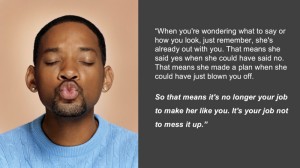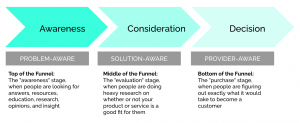
Mindfulness is a word that’s being used in just about every walk of life at the moment. Google, Apple, Nike and many of the world’s most successful brands have realised and harnessed the power of mindfulness.
Even though it’s a way of living that’s been around for thousands of years many people are still confused as to what it really is.
Perceptions of mindfulness range from eco-warrior’s holding hands chanting on yoga mats to people spending 3 minutes meticulously brushing each tooth every morning.
At Mindful Presenter we believe that mindfulness is the route to switching off ‘autopilot’ and living more consciously. In a world filled with noise and distractions living with greater awareness and consciousness is a monumental challenge for most of us.
When it comes to presenting our ideas at work many people are plagued with memories of past presentations that didn’t go so well. Even the most talented and experienced presenters are not exempt from worry as their minds swirl with the horror of what could go wrong this time.
Here are 5 challenging but extremely powerful mindfulness techniques that will serve you extremely well each time you present.
- Check out
“The definition of insanity is doing the same thing over and over again, but expecting different results.” Albert Einstein
You have an important presentation coming up, you’ve left it to the last minute to prepare and that last minute arrives. You grit your teeth, open up PowerPoint, find a template you’ve used a hundred times before and start typing.
You repopulate the template with the new data that supports your new objective.
Does that sound familiar?
If it does, rest assured you’re not alone and the net result is that you end up doing exactly what you always do and what everyone around you does too. If that works for you, great, if it doesn’t there’s another way.
Change your environment, find a new personal space that is more nurturing; that’s unlikely to be your desk.
– Book time out in a meeting room that you like; play some soothing background music on your phone or watch 5 minutes of an inspirational video before you get to work on your presentation
– If you can’t find a meeting room that you like or they are all booked out, don’t despair. Go to the library for a few hours, find a quiet coffee shop or if the weathers decent go and sit in a nearby park or bench by the river.
– Get off the grid for a while; turn off your phone, email, LinkedIn, Facebook and anything else which may distract you. Mindfulness doesn’t need the help of social media or your mobile phone unless you are using an app to meditate.
An interesting article in the Financial Times; ‘How the modern office is killing our creativity’, a veteran British adman named Roger Mavity suggests that, “The first thing that helps creativity is solitude.”
- Calm down
“The more tranquil a man becomes, the greater is his success, his influence, his power for good. Calmness of mind is one of the beautiful jewels of wisdom.” James Allen
Once you’ve found your personal space, take a few moments to calm down.
The mindful presenter’s first challenge is to calm the chaos of the mind. A helpful article in Inc.com called; Neuroscience: Relaxing Makes You More Creative, author Geoffrey James suggests that, ‘Scientists studying brain scans recently discovered that moments of creativity take place when the mind is at rest rather than working on something.’
I’m sure we’ve all had some experience of that although sadly a few obstacles get in our way of practicing mindfulness:
– We tell ourselves we are too busy; we just don’t have time.
– We tell ourselves that the only way we can really calm down is to head off to a retreat, drink herbal tea and get up at 5am each morning to do yoga
– We tell ourselves, ‘all I need is a glass of wine’
The best way I’ve found to slow down, calm down and be present is to meditate for a few minutes. You don’t have to fly off to an ashram or balance your chakras all you have to do is take a few moments to breathe.
All it takes is 3 minutes; 3-minute Mindful Breathing Meditation
- Tune in
“There is nothing more important to true growth than realizing that you are not the voice of the mind—you are the one who hears it.” Michael Singer
Every presenter’s greatest challenge is to connect emotionally as well as intellectually with their audience. Anyone can present (with varying levels of confidence and clarity) but your audience want you to connect with them too.
With that in mind, how can you connect with your audience if you haven’t taken the time to connect with yourself first.
Tuning in means taking a few moments to become consciously aware of our own thoughts and feelings immediately before and the moment in which we stand to present.
Notice your thoughts.
Are they helping or hindering you?
Are they focused on what didn’t work for you in the past or what could go wrong now?
Are they about your strife for survival or perfection or are they about how you can help your audience?
Whatever you notice yourself thinking, remind yourself that that’s all they are, thoughts. In her thought provoking TEDTalk, ‘A simple trick to improve positive thinking’, Alison Ledgerwood reminds us that our minds may be built to look for negative information and to hold on to it but we can retrain our minds if we put some effort into it.
- Be quiet
“The right word may be effective, but no word was ever as effective as a rightly timed pause.” Mark Twain
Suggesting that you ‘be quiet’ as a technique to becoming a better presenter and public speaker sounds strange, I know.
In this case I’m talking about the power of the pause.
In my experience, a great number of presenters speak too fast and rarely take a moment to pause. For many speakers, two seconds of silence feels like an uncomfortable eternity. For our audience, however, that momentary pause is received as a gift.
The practice of slowing down our speech and pausing from time to time doesn’t come easily to many presenters.
Long before you stand to present, practice reading some content out loud. It could be the newspaper, a magazine or a few paragraphs from your favourite book. Find somewhere that you won’t be disturbed for a few minutes and read the content out loud and slowly to yourself. As you do so practice pausing in between each sentence for two seconds.
In other words, become comfortable with silence and when the time comes to present it will feel easier.
Pauses help you to transition from one idea to another with impact.
Pauses help you to control the pace of your delivery.
Pauses help you to breathe and replace the ‘errs’, ‘uhms’ ‘so’s’.
Pauses help you to think.
Pauses help to create contrast and suspense where you need to.
Pauses help give you audience a moment to absorb your message.
The motivational public speaker and self-development author Brian Tracy sums up the power of the pause for us beautifully in less than 4 minutes:
- Get focused
“My success, part of it certainly, is that I have focused in on a few things.” Bill Gates
In a previous article, I wrote, ‘The prerequisite to ensuring you craft and deliver a memorable presentation to any audience is focus.’
The essence of mindful presenting is focus. Everything we share in our presentation skills training courses and public speaking coaching sessions revolves around developing an audience- focused perspective rather than a speaker-focused one. Focusing on yourself as the presenter is the route to anxiety and mediocrity whilst focusing on your audience is the key to success.
Put yourself in your audience’s shoes, ask yourself:
Who they really are?
How much they know already?
How you can help them?
What they need and want?
Why they should care?
How you want them to feel?
What you want them to do?
What misconceptions, if any, do they have about your message?
What resistance there could possibly be?
What questions are they likely to ask you?
The reason so many people struggle to focus is because our brains crave distraction. Chris Bailey shares How to Get Your Brain to Focus, in his ‘TEDx Talk.
Earlier in this article I shared a belief that anyone can present. Regardless of age, experience or position, millions of us are called on to present in organisations across the world with varying levels of confidence and clarity. Most people dread the idea and many accept that it’s not something they particularly enjoy but know they just have to do it. Occasionally, we meet people that relish the opportunity of presenting; occasionally.
Wherever you believe you are on that arc, it’s also true that most of us don’t like being on the receiving end of business presentations either.
The secret to enjoying presenting and looking forward to listening to one is mindfulness. Practicing these 5 simple but very challenging techniques will serve both you and your audience extremely well.
Image source: istockphoto.com
Business & Finance Articles on Business 2 Community
(15)








